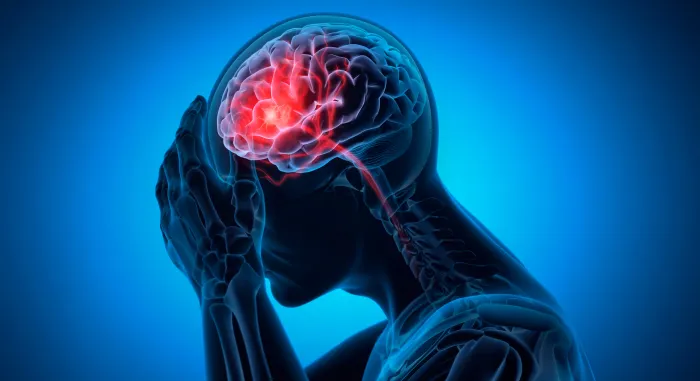Guide to First Aid For Brain Stroke What To Do And Not To Do
Learn essential brain stroke first aid steps, BE-FAST warning signs, what to do and avoid, and how to act fast at home, work, or public places to save lives.


Introduction
Every minute counts during a brain stroke. Quick, confident first aid can protect brain function and even save a life. Yet many people hesitate, try home remedies, or confuse stroke with a heart attack—losing precious time. This guide distills what the general public needs to know about brain stroke first aid: the classic BE-FAST warning signs, exactly what to do and not do in the first critical minutes, and how to tailor your response at home, at work, or in public places. You’ll also learn why immediate action matters, what to expect in the emergency department, and how to reduce future risk after a TIA or mild event. We include practical examples, a clear do-not list, and tools you can set up on your phone today. Whether you’re caring for parents, colleagues, or children—or simply want to be ready—this step-by-step guide to brain stroke first aid can help you act fast, stay calm, and make the difference when it matters most.
Why Brain Stroke First Aid Matters Right Now
Time is the most critical factor in a stroke emergency. A stroke deprives parts of the brain of oxygenated blood. The longer circulation is blocked or bleeding continues, the higher the risk of permanent disability or death. Researchers estimate that an untreated large stroke can destroy about 1.9 million neurons every minute, underscoring the urgency of immediate action. That’s why stroke care specialists say, “Time is brain.”
The first link in the chain of survival for stroke is early recognition and activating emergency services. From there, rapid assessment in the ambulance, transport to a stroke-ready hospital, urgent brain imaging (CT or MRI), and timely treatments—such as clot-busting medication within the 4.5-hour window for eligible ischemic strokes, or mechanical thrombectomy up to 24 hours in selected patients—can dramatically improve outcomes. But none of this can begin until someone recognises the signs and calls for help.
Real-world data show that people who arrive by ambulance reach the right tests and treatments much faster than those who self-transport. In many countries, specialised stroke teams are activated the moment EMS suspects stroke. The goal is door-to-needle in under 60 minutes for thrombolysis, and even faster is better. Your role in the first minutes—spotting the signs, noting the time symptoms started, keeping the person safe, and calling emergency services—can make lifesaving treatments possible.
Consult Top Specialists
Understanding Brain Stroke: Types and Mechanisms
A brain stroke is an acute injury to the brain caused by interrupted blood flow. There are two major types:
- Ischemic stroke (about 85% of strokes): A blood clot blocks a brain artery. This may be due to a clot travelling from the heart (e.g., atrial fibrillation) or forming in a narrowed vessel in the neck or brain. First aid for brain stroke at home focuses on rapid emergency activation because the main hospital treatment—a clot-busting drug (thrombolysis) or mechanical clot removal (thrombectomy)—is time-sensitive.
- Haemorrhagic stroke (about 15%): A blood vessel bursts and bleeds into or around the brain, often due to high blood pressure or a weak spot in a vessel (aneurysm). Early hospital treatment aims to control bleeding, reduce pressure in the skull, normalise blood pressure, and manage complications.
There’s also TIA (transient ischemic attack), sometimes called a “mini-stroke.” Symptoms are the same as a stroke but resolve within minutes to hours. TIAs are medical emergencies because they predict a high risk of a major stroke in the short term. Immediate evaluation can identify and treat the cause, such as a severely narrowed carotid artery or dangerous heart rhythm.
You cannot tell ischemic from haemorrhagic stroke by symptoms alone. Because aspirin can worsen bleeding, do not give aspirin unless instructed by a medical professional after imaging has ruled out haemorrhage. This distinction is one reason why fast transport to a hospital with brain imaging is the cornerstone of stroke first aid.
Recognising Stroke Fast: BE-FAST Signs and Atypical Clues
Use BE-FAST to remember the most common brain stroke symptoms:
- Balance: Sudden loss of balance or coordination
- Eyes: Sudden vision loss or double vision, especially in one eye or one side
- Face: Face drooping on one side—ask the person to smile
- Arms: Arm or leg weakness/numbness on one side—ask them to raise both arms
- Speech: Slurred speech, difficulty finding words, or inability to understand
- Time: Time to call emergency services immediately
Other important signs can include a sudden, severe headache (especially with vomiting or neck stiffness), trouble swallowing, confusion, or a sudden change in behaviour. In posterior circulation strokes (affecting the back of the brain), dizziness, imbalance, and eye movement problems may dominate—these are sometimes missed without the B and E of BE-FAST.
Atypical or subtle clues: In older adults, sudden confusion, new disorientation, or a sudden unexplained fall may be the only tip-off. In women, symptoms like altered consciousness, generalized weakness, or nausea may be more prominent. In people with diabetes, low blood sugar can mimic stroke; if a glucometer shows severe hypoglycaemia and the person is able to safely swallow, rapid glucose intake may reverse symptoms—but if you’re unsure or swallowing is unsafe, call emergency services and avoid giving anything by mouth.
Always note the “last known well” time—when the person was last seen at their normal baseline. This timestamp determines eligibility for treatments and is more reliable than when symptoms were first noticed.
First Aid: What To Do Immediately (Step-by-Step)
- Call emergency services now.
- In India, call 108 (ambulance) or 112 (emergency). In other countries: 911 (US), 999 (UK), 112 (EU).
- Say “Possible stroke” and describe the BE-FAST signs. Share the exact “last known well” time.
- Keep the person safe and comfortable.
- Sit them upright or with the head elevated about 30 degrees unless they feel faint. If vomiting or drowsy, place in the recovery position (on their side) to protect the airway.
- Loosen tight clothing, remove dentures if they’re loose, and keep the environment calm.
- Monitor airway, breathing, and circulation.
- If the person is unresponsive and not breathing normally, start CPR and follow dispatcher instructions.
- If breathing but drowsy, watch closely for changes until EMS arrives.
- Do not give food, drink, or pills.
- Many stroke patients have trouble swallowing; giving anything by mouth risks choking or aspiration.
- Check blood sugar if a glucometer is readily available.
- If a known diabetic is conscious and a glucometer reading shows severe hypoglycaemia (for example <60 mg/dL), follow your local hypoglycaemia protocol: give a measured glucose gel or sugary drink only if swallowing is safe. If uncertain, prioritise airway safety and await EMS.
- Gather information.
- Make a list or take photos of current medications (especially blood thinners like warfarin, apixaban, rivaroxaban) and allergies.
- Note prior illnesses (e.g., atrial fibrillation, recent surgery, previous stroke).
- Bring any available medical records to the hospital.
- Stay off the road.
- Do not drive the person to the hospital yourself. EMS can start life-saving care en route and pre-alert the stroke team.
Consult Top Specialists
What Not To Do During a Suspected Stroke
Avoid these common mistakes—they can cause harm or dangerous delays:
- Do not delay. Waiting, napping, or hoping it passes wastes treatment time windows.
- Do not give food, drink, or pills. Swallowing may be impaired, risking choking and pneumonia.
- Do not give aspirin or painkillers. Aspirin can worsen bleeding in a haemorrhagic stroke. Only give antiplatelets if instructed by professionals after imaging.
- Do not drive yourself. Calling an ambulance gets faster care, safer monitoring, and hospital pre-alert.
- Do not lower blood pressure with home medications. Sudden drops can worsen brain perfusion; blood pressure is carefully managed in hospital.
- Do not give alcohol, herbal remedies, or apply home treatments. These have no proven benefit and may be dangerous.
- Do not ignore mild or improving symptoms (possible TIA). TIAs predict imminent stroke and need urgent evaluation.
Self-diagnosing migraine or vertigo is a frequent cause of dangerous delays. If symptoms are sudden and focal (one-sided weakness, slurred speech, vision loss), treat it as stroke until proven otherwise.
Special Situations You May Face
- Diabetes: Low blood sugar can mimic stroke. Check a glucometer if safe. If very low and the person can swallow, administer glucose. If swallowing is unsafe, wait for EMS.
- Seizure during suspected stroke: Place the person in recovery position after the seizure, clear the area, monitor breathing, do not put anything in the mouth, and call emergency services.
- Pregnancy and postpartum: Risk is higher; treat symptoms as above. Emergency teams will coordinate safe imaging and treatments.
- Children: Paediatric strokes are less common. BE-FAST signs apply. Call emergency services.
- Blood thinners: Tell EMS if the person takes warfarin, apixaban, rivaroxaban, or similar. Do not stop or adjust medications.
Save photos of medication labels on your phone for older family members. Quick access to exact drug names and doses can save crucial minutes.
Home, Workplace, and Public Place: Custom Action Plans
At home:
- Post BE-FAST signs on the fridge. Teach family to note the “last known well” time immediately.
- Keep a medication list, allergies, and medical history on paper and in a phone Medical ID.
- Assemble a stroke-ready first aid kit: glucometer (if diabetic), BP cuff, notepad, pen, phone charger, list of emergency numbers, and a visible address sign.
At work:
- Train staff on BE-FAST and run brief drills. Identify who calls emergency services, who meets the ambulance, and who
records “last known well.” - Ensure clear signage for building entrances and elevators to speed EMS access.
- Keep key medical emergency info at the reception or security desk.
In public places:
- Recruit a helper: one calls emergency services and directs responders, the other stays with the person.
- Use your phone to pin and share precise location. Note the nearest entrance/gate in malls or transit hubs.
Emergency numbers:
- India: 108 (ambulance), 112 (emergency)
- US: 911
- UK: 999
- EU: 112
- Australia: 000
After First Aid: What Happens in the ER and Why Speed Matters
On arrival, the hospital initiates a code stroke. Rapid triage, a neurological exam, and immediate brain imaging (usually CT) determine if the stroke is ischemic or haemorrhagic. Key labs and an ECG follow. For eligible ischemic strokes, intravenous clot-busting medication can be given within 4.5 hours of symptom onset, and mechanical thrombectomy is highly effective for large vessel occlusions if performed within 6 hours, and in select patients up to 24 hours.
Early aspirin is nuanced. It helps ischemic strokes after imaging confirms no bleeding, usually started within 24 hours. If a haemorrhagic stroke is present, aspirin could worsen bleeding. First aid focuses on getting to imaging, not giving medications at home.
Expect close monitoring of blood pressure, oxygen levels, and blood sugar; management of fever; and evaluation for underlying causes. Families can help by providing accurate onset times and medication lists.
Preventive First Aid After a TIA or Minor Symptoms
A TIA is a medical emergency with a high short-term risk of a full stroke. Seek urgent evaluation. Doctors may order carotid imaging, heart rhythm monitoring, echocardiography, and blood tests for risk factors.
Lifestyle changes:
- Control blood pressure, blood sugar, and cholesterol
- Stop smoking and avoid secondhand smoke
- Aim for 150 minutes of moderate aerobic activity per week, plus strength training
- Maintain a healthy weight and manage sleep apnea if present
- Take medications as prescribed
TIAs should be treated as a warning: the first 48 hours are the highest risk window—urgent medical care can be lifesaving.
Myths vs Facts: Cutting Through Confusion
- Myth: If the person can still talk, it’s not a stroke. Fact: Speech can be normal in some strokes; look for other BE-FAST
signs. - Myth: Aspirin is always good in emergencies. Fact: Aspirin can worsen bleeding strokes; only take it after imaging confirms no haemorrhage.
- Myth: Let them sleep it off. Fact: Delay can cost eligibility for clot-busting treatments; call emergency services.
- Myth: It’s probably vertigo or migraine. Fact: Sudden one-sided symptoms or vision loss requires stroke evaluation.
- Myth: Driving is faster than waiting for an ambulance. Fact: EMS pre-alerts the hospital, starts care en route, and gets you into scanners faster.
Consult Top Specialists
Conclusion
In a brain stroke emergency, simple, decisive first aid can protect irreplaceable brain function. Recognise BE-FAST signs, call emergency services immediately, and note the “last known well” time. Keep the person safe—head elevated, airway protected—and avoid giving food, drink, aspirin, or blood pressure medications before hospital assessment.
Your rapid response can open the door to time-sensitive treatments such as clot-busting drugs or thrombectomy that markedly improve outcomes. After a TIA or mild event, treat it as an urgent warning: get evaluated quickly, address blood pressure, blood sugar, and cholesterol, and follow through on medications and lifestyle changes. Consult a doctor online with Apollo 24|7 to create a personalised plan, and for follow-up labs, Apollo 24|7 offers convenient home collection for tests like lipid profile and HbA1c. Make preparedness a habit: set up Medical ID on your phone, post BE-FAST at home and work, and run brief family or office drills. When seconds matter, being ready and acting fast can make all the difference.
Consult Top Specialists

Dr. Aditendraditya Singh Bhati
Neurosurgeon
21 Years • MBBS(2004), DNB Neurosurgery(2014); MNAMS; Fellow Skull Base Endoscopy (Italy), Fellow Extended Skull Base ( Weill Cornell, USA), Fellow ZAP-X Radiosurgery. Member of American Association of Neurological Surgeons
Delhi
Apollo Hospitals Indraprastha, Delhi
(100+ Patients)

Dr. Ganeshgouda Majigoudra
Neurologist
10 Years • MBBS, MD ( GENERAL MEDICINE) DM (NEUROLOGY)
Bengaluru
Apollo Clinic, JP nagar, Bengaluru

Dr Rajashekar Mummadi
Neurologist
3 Years • MBBS, DNB General Medicine, DRNB Neurology
Hyderabad
Dr Ram's Neuro Clinic, Hyderabad

Dr. E Prabhakar Sastry
General Physician/ Internal Medicine Specialist
40 Years • MD(Internal Medicine)
Manikonda Jagir
Apollo Clinic, Manikonda, Manikonda Jagir
(150+ Patients)

Dr S Selvin
Neurologist
10 Years • MBBS, MD, DM (Neurology), FINR fellowhsip in Interventional Neuro Radiology
Chennai
Apollo Speciality Hospitals Vanagaram, Chennai
Consult Top Specialists

Dr. Aditendraditya Singh Bhati
Neurosurgeon
21 Years • MBBS(2004), DNB Neurosurgery(2014); MNAMS; Fellow Skull Base Endoscopy (Italy), Fellow Extended Skull Base ( Weill Cornell, USA), Fellow ZAP-X Radiosurgery. Member of American Association of Neurological Surgeons
Delhi
Apollo Hospitals Indraprastha, Delhi
(100+ Patients)

Dr. Ganeshgouda Majigoudra
Neurologist
10 Years • MBBS, MD ( GENERAL MEDICINE) DM (NEUROLOGY)
Bengaluru
Apollo Clinic, JP nagar, Bengaluru

Dr Rajashekar Mummadi
Neurologist
3 Years • MBBS, DNB General Medicine, DRNB Neurology
Hyderabad
Dr Ram's Neuro Clinic, Hyderabad

Dr. E Prabhakar Sastry
General Physician/ Internal Medicine Specialist
40 Years • MD(Internal Medicine)
Manikonda Jagir
Apollo Clinic, Manikonda, Manikonda Jagir
(150+ Patients)

Dr S Selvin
Neurologist
10 Years • MBBS, MD, DM (Neurology), FINR fellowhsip in Interventional Neuro Radiology
Chennai
Apollo Speciality Hospitals Vanagaram, Chennai
Consult Top Specialists

Dr. Aditendraditya Singh Bhati
Neurosurgeon
21 Years • MBBS(2004), DNB Neurosurgery(2014); MNAMS; Fellow Skull Base Endoscopy (Italy), Fellow Extended Skull Base ( Weill Cornell, USA), Fellow ZAP-X Radiosurgery. Member of American Association of Neurological Surgeons
Delhi
Apollo Hospitals Indraprastha, Delhi
(100+ Patients)

Dr. Ganeshgouda Majigoudra
Neurologist
10 Years • MBBS, MD ( GENERAL MEDICINE) DM (NEUROLOGY)
Bengaluru
Apollo Clinic, JP nagar, Bengaluru

Dr Rajashekar Mummadi
Neurologist
3 Years • MBBS, DNB General Medicine, DRNB Neurology
Hyderabad
Dr Ram's Neuro Clinic, Hyderabad

Dr. E Prabhakar Sastry
General Physician/ Internal Medicine Specialist
40 Years • MD(Internal Medicine)
Manikonda Jagir
Apollo Clinic, Manikonda, Manikonda Jagir
(150+ Patients)

Dr S Selvin
Neurologist
10 Years • MBBS, MD, DM (Neurology), FINR fellowhsip in Interventional Neuro Radiology
Chennai
Apollo Speciality Hospitals Vanagaram, Chennai
Frequently Asked Questions
What are the first signs of a brain stroke I should look for at home?
Use BE-FAST: sudden Balance problems, Eye changes, Face droop, Arm weakness, Speech difficulty, and Time to call emergency. Act immediately.
Should I give aspirin as first aid for stroke?
No. Aspirin can worsen a haemorrhagic stroke. Only medical professionals should start aspirin after imaging confirms an ischemic stroke.
How should I position a stroke patient while waiting for help?
Keep the head elevated about 30 degrees. If drowsy or vomiting, place in the recovery position on their side. Do not give food or drink.
What if stroke symptoms improve quickly—could it be a mini-stroke (TIA)?
Possibly, but it’s still an emergency. TIAs predict higher short-term risk. Seek urgent care. For follow-up, consult a doctor online with Apollo 24|7.
How is stroke different from a heart attack in first aid?
Heart attack often involves chest pain and aspirin may be advised. Stroke involves BE-FAST neurological signs and you should not give aspirin until bleeding is ruled out. Call emergency services immediately.